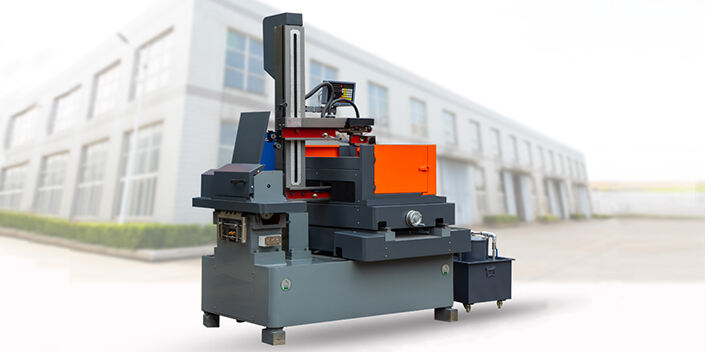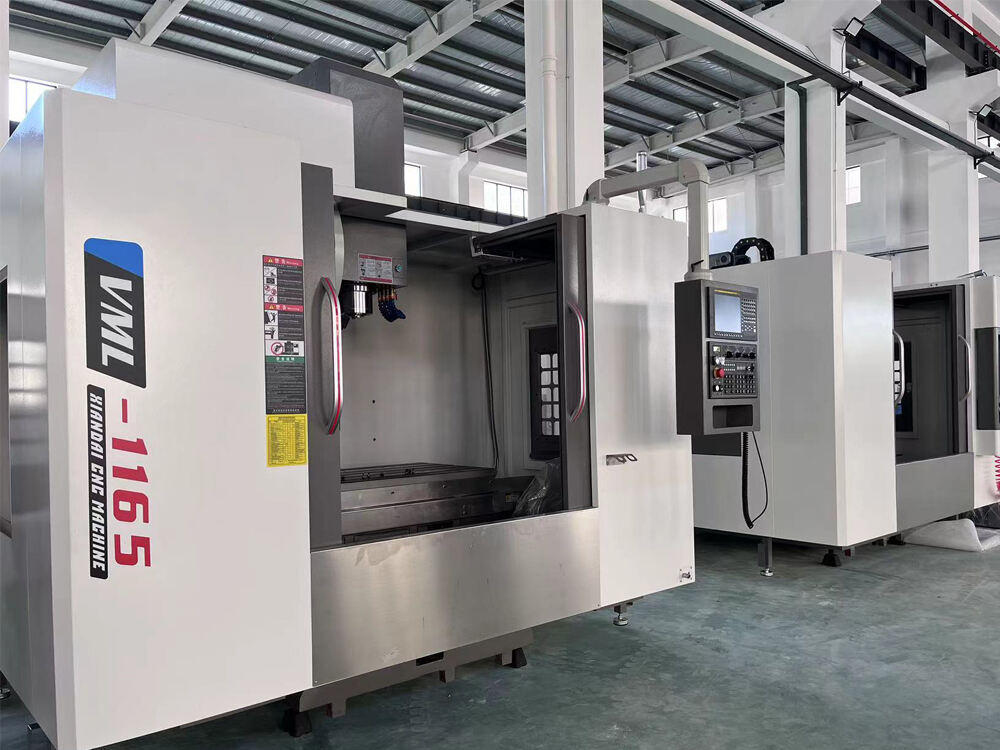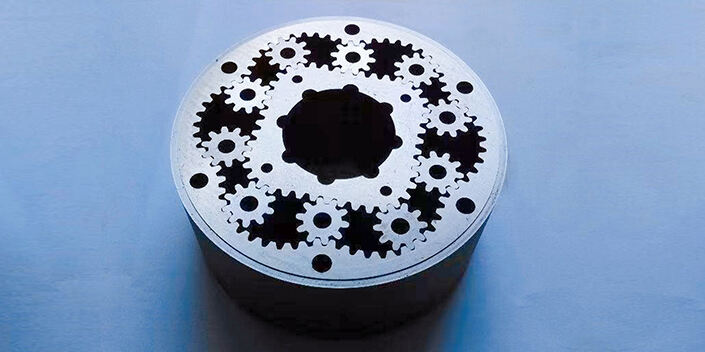How Pipe Making Machines Transform Raw Materials into Finished Pipes
Today's pipe manufacturing equipment makes it much easier to turn raw plastics or metals into accurately shaped pipes using automated extrusion methods. The process starts by heating materials to specific temps, usually between 150 and 220 degrees Celsius when working with PVC. Then comes the shaping part where the material passes through specially designed dies that can maintain incredibly tight tolerances, sometimes within just 0.1 millimeter either way. According to some recent findings from the 2023 Industrial Automation Report, these high-tech extruders manage to convert materials with about 98.7% efficiency. That means very little goes to waste, and factories can crank out around 15 meters of pipe every single minute.
Growing Demand for Automated Pipe Making Machines in Industrial Applications
According to Global Market Insights from 2024, the market for automated pipe manufacturing gear looks set to expand at around 12% each year until 2028. This growth comes mainly from construction projects needing more pipes as infrastructure develops across many regions, plus the oil and gas industries that need pipelines resistant to corrosion problems. Construction sites report roughly 14% annual increase in pipe requirements alone. Manufacturers today are increasingly looking for machinery equipped with IoT features for predictive maintenance purposes. These smart systems can cut down on factory downtime significantly, some estimates suggest around 35% less than what traditional manual approaches typically experience. The savings in lost production time makes these investments particularly attractive for plant managers facing tight deadlines and budget constraints.
Integrating Pipe Manufacturing Process Overview into Factory Planning
Forward-thinking manufacturers optimize production flows by:
- Co-locating raw material silos with twin-screw extruders to minimize transport delays
- Implementing closed-loop water cooling systems that recycle 90% of process water
- Installing inline laser measurement tools for real-time diameter verification
This integrated approach boosts overall equipment effectiveness (OEE) from 65% to 82% in retrofitted facilities.
Case Study: PVC Pipe Production in Southeast Asian Infrastructure Projects
Southeast Asia's $120 billion infrastructure push (ASEAN 2023) has driven 40% annual growth in PVC pipe demand. A regional manufacturing hub achieved 24/7 production of 400mm drainage pipes using modular extrusion lines, supplying 85 km of piping monthly for Jakarta's flood mitigation projects while maintaining ±0.3% wall thickness consistency.
Core Components and Engineering Principles of Pipe Making Machines
Key Components: Twin-Screw Extruder, Die Head, and Cooling System
Today's pipe manufacturing equipment typically works with three main systems that turn basic plastic materials into accurately shaped pipes. The twin screw extruder is probably the most important part since it melts down the polymer and mixes it thoroughly. These dual screws spin in opposite directions which actually gives about 30% better mixing results compared to older single screw models. After mixing, the material goes through the die head where it gets formed into specific sizes thanks to those computer-controlled cutting profiles. Meanwhile, special cooling systems keep everything stable by controlling water temps really closely, usually within plus or minus 1.5 degrees Celsius. Most factories report that when all these parts work together properly, they can produce pipes at around 25 meters per minute speed without going over the allowed dimensional tolerance of 0.2 millimeters for standard PVC products.
From Feeding to Calibration: Functions of Pipe Extruder Components
Automated feeders deliver raw pellets into the extruder’s heating zones, where temperatures reach 200–240°C for optimal melt flow. Pressure sensors monitor material viscosity as it enters the die head, with vacuum calibration tanks ensuring uniform wall thickness before laser measurement systems verify dimensional accuracy.
High-Precision Forming Technology in Modern Pipe Making Machines
Advanced extruders now integrate real-time wall thickness adjustment, reducing material waste by 18% through servo-driven feedback loops. Adaptive cooling algorithms optimize solidification rates, minimizing residual stresses in pipes exceeding 1,200mm diameters.
Single-Screw vs. Twin-Screw Extruders: Material Efficiency Compared
While single-screw systems achieve 85% material efficiency in standard polyethylene production, twin-screw extruders excel with composite blends—processing fiber-reinforced PVC at 78% efficiency versus single-screw’s 63% in large-scale trials. Thermal recovery systems further cut energy use by 12–15% per production cycle.
Types of Pipe Extruders and Their Industrial Applications
Single-Screw, Twin-Screw, and High-Output Pipe Extruders: A Functional Comparison
Today's pipe manufacturing equipment typically relies on three main types of extruders to handle different industrial requirements. The single screw model is still king when it comes to basic PVC pipe production, cutting down material waste by around 18 to 22 percent compared with older techniques according to that Plastics Tech Journal from last year. These machines have simpler mechanical setups which makes them pretty economical for running long batches of water pipes continuously. Then there are twin screw versions that really shine at complicated jobs such as creating multi layer pipes. Those intermeshing screws give about 30% improvement in how well polymers mix together during processing. And for serious heavy duty work, we see high output extruders doing the job. They can push through materials at speeds reaching 1200 kilograms per hour while maintaining wall thickness accuracy within plus or minus 0.15 millimeters. Municipalities working on big drainage systems definitely need these beasts when dealing with those oversized pipes required for major infrastructure projects.
Applications in Construction, Plumbing, and Oil & Gas Industries
Most buildings today depend on PVC pipe extruders for around three quarters of all plumbing work because these pipes just don't corrode easily and can last about half a century before needing replacement. When it comes to oil and gas fields, companies often turn to PE or PP pipes made using twin screw systems that handle pressures between 250 to 400 psi without breaking down when exposed to hydrocarbons. According to some industry data from last year, roughly two thirds of offshore drilling sites have started adopting co extruded pipes with special inner coatings designed specifically to stop chemicals from eating away at them over time.
Cross-Sector Use of Pipe Making Machines: Performance and Adaptability
These machines demonstrate remarkable versatility:
- Agricultural drip irrigation systems use UV-stabilized HDPE pipes extruded at 45–60 m/minute speeds
- High-purity pharmaceutical-grade tubing requires extruders with titanium screws and ISO Class 5 cleanrooms
- Mining operations deploy abrasion-resistant polymer pipes capable of handling 80°C slurry mixtures
Such adaptability stems from modular designs allowing quick die head swaps and programmable temperature zones (±1°C accuracy) for different polymers. Recent advances enable a single production line to switch between ABS sewer pipes and flexible PEX tubing within 90 minutes, cutting retooling costs by 40%.
Automation and Technological Advancements in Pipe Making Machines
PLC-Controlled Automation for Consistent and Safe Pipe Production
Today's pipe manufacturing equipment relies heavily on PLC systems for controlling the whole process from extrusion right through to calibration and cooling, achieving pretty impressive accuracy around 0.05 mm either way. According to folks running major plants, these automated setups have slashed the need for hands-on adjustments by about 70%, all while keeping production moving at speeds reaching 12 meters every minute. The International Piping Association did some research last year showing that when companies switch to PLC controlled machines, they end up wasting roughly 18% less material than traditional methods, especially noticeable when working with PVC and HDPE pipes where even small improvements make a big difference in costs.
Advanced Control Systems in Modern Pipe Processing Lines
Next-gen control systems integrate IoT sensors and predictive analytics to optimize energy consumption and prevent downtime. Key innovations include:
- Self-adjusting die heads that compensate for material viscosity changes
- Automated thickness calibration using laser-guided measurement
- Remote diagnostics accessible via cloud platforms
These systems enable a 25% faster production ramp-up for customized pipe specifications according to 2024 manufacturing data.
Real-Time Quality Monitoring and Defect Detection Systems
Vision-based inspection systems now detect surface irregularities as small as 0.2 mm² at line speeds exceeding 10 m/s. Thermal cameras paired with AI algorithms identify cooling inconsistencies with 99.7% accuracy, reducing post-production quality rejects by 40% in high-volume operations.
Balancing High Initial Investment with Long-Term Operational Gains
While automated pipe making machines require 30–50% higher upfront costs than conventional models, operators achieve ROI within 18–24 months through:
- 60% reduction in labor costs
- 22% lower energy consumption per meter
- 15% longer tooling lifespan from optimized process parameters
The 2024 Advanced Manufacturing Report shows automated lines produce 2.4x more pipe footage annually compared to semi-automated systems.
Efficiency, Customization, and Future Trends in Pipe Manufacturing
Maximizing Production Speed and Output with Automated Lines
Modern pipe making machines achieve throughput rates exceeding 150 meters/minute through PLC-controlled automation, reducing human error by 40% compared to manual systems. Real-time thickness monitoring and automatic diameter adjustment enable continuous 24/7 operation, critical for large-scale infrastructure projects requiring uniform pipe dimensions.
Material Optimization and Waste Reduction in PVC Pipe Manufacturing
Advanced twin-screw extruders now recover 92–95% of raw PVC materials through closed-loop recycling systems, aligning with global sustainability targets. A 2024 Plastic Pipe Market Analysis shows thermally stabilized polymer blends reduce energy consumption by 18% while maintaining pressure ratings up to 25 bar.
Custom Solutions for Diverse Industry Needs in Pipe Fabrication
Modular pipe making machines support rapid die changes for producing diameters from 12mm to 2,400mm, serving sectors from microfluidic medical tubing to offshore oil pipelines. IoT-enabled predictive maintenance protocols cut downtime by 35% in multi-material operations, with 3D-printed die heads enabling complex geometries unattainable through conventional machining.
FAQ
What is the role of a twin-screw extruder in pipe making?
A twin-screw extruder is crucial in pipe making as it melts and thoroughly mixes the polymer material, providing better mixing results and forming accurately shaped pipes.
Why are PLC systems important in pipe manufacturing?
PLC systems automate control over the manufacturing process, enhancing accuracy and reducing hands-on adjustments, which minimizes material waste and boosts production efficiency.
How do modern pipe making machines ensure energy efficiency?
Modern machines often integrate IoT sensors and predictive analytics to optimize energy use and cut down on wastage, significantly increasing energy efficiency and reducing operational costs.
What advantages do high-output pipe extruders provide?
High-output extruders handle heavy-duty production efficiently, maintaining wall thickness accuracy and processing large volumes of material, essential for major infrastructure projects.
How do pipe making machines handle quality control?
Quality control is achieved through real-time thickness monitoring, vision-based inspection systems for surface irregularities, and thermal cameras paired with AI for cooling consistency.
Table of Contents
- How Pipe Making Machines Transform Raw Materials into Finished Pipes
- Growing Demand for Automated Pipe Making Machines in Industrial Applications
- Integrating Pipe Manufacturing Process Overview into Factory Planning
- Case Study: PVC Pipe Production in Southeast Asian Infrastructure Projects
- Core Components and Engineering Principles of Pipe Making Machines
- Types of Pipe Extruders and Their Industrial Applications
- Automation and Technological Advancements in Pipe Making Machines
- Efficiency, Customization, and Future Trends in Pipe Manufacturing
- FAQ





